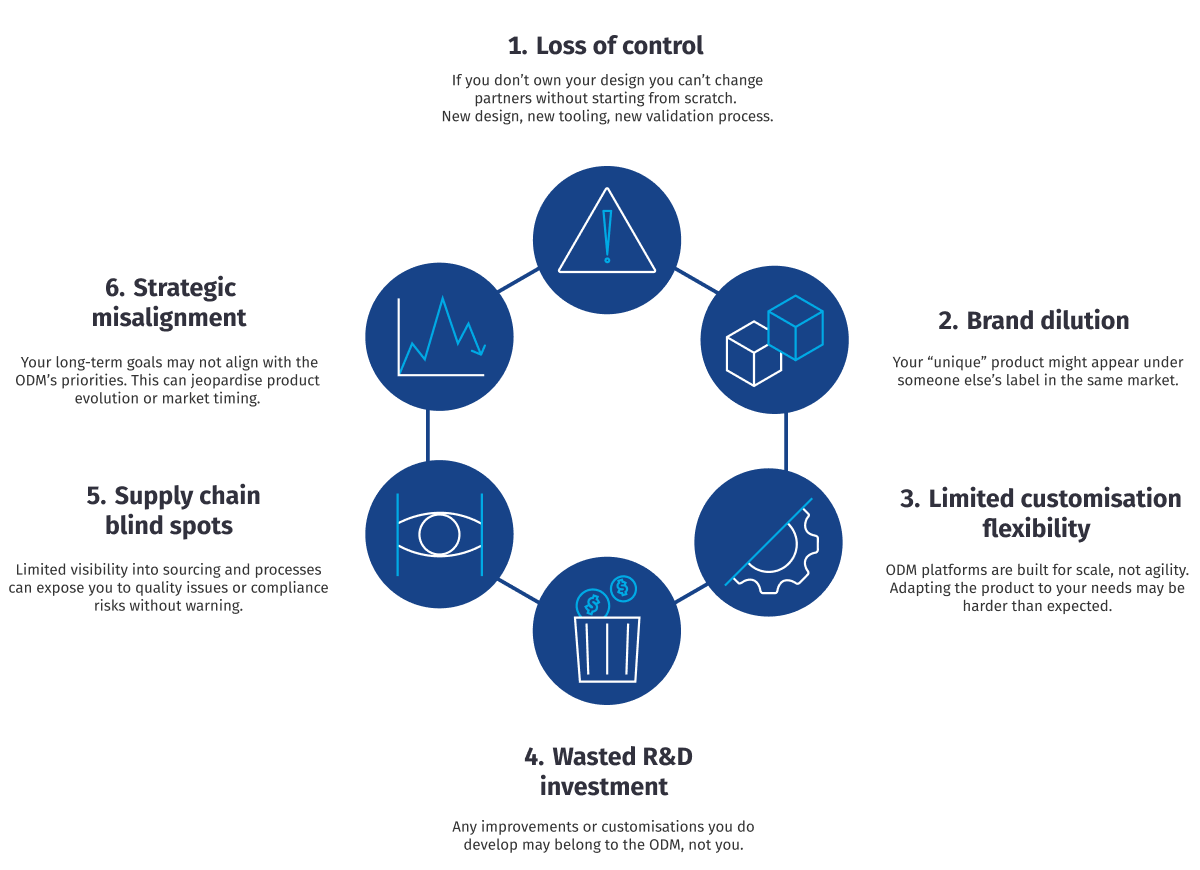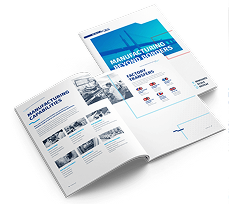In the race to bring electronic products to market faster, outsourcing is a common strategy. However, many companies taking this route ultimately lose ownership of their intellectual property (IP). Here’s how to avoid that common outsourcing trap.
Busy companies looking to outsource design and development to accelerate their path to market often face intense commercial pressure.
When a product launch is tied to a tight timetable, teams can be rushed into accepting vague terms around ultimate access to finished designs and BOMs.
The result may be misaligned expectations, hidden legal pitfalls, and the risk of giving up valuable IP rights altogether
How did we get here?
EMS (Electronics Manufacturing Services) partnerships initially dominated the electronics space. These manufacturing partners focused on building products to a customer’s design and specification.
In these relationships the OEM (Original Equipment Manufacturer) retained ownership of the design, IP, and tooling, while the EMS partner provided the scale, supply chain efficiency, and production expertise needed to bring it to life.
However, as manufacturers - particularly in China - developed their own engineering capabilities, they began offering ODM (Original Design Manufacturer) services instead. Their offering consisted of pre-designed or co-designed products that could be quickly rebranded and marketed by customers, drastically reducing time to market.
These kind of service offerings were right for some OEMs who were less innovation focused, but needed access to markets quickly. For others, it was precisely the wrong direction to go.
Why ODM agreements are different
Here’s the complexity: in an ODM arrangement, unless you explicitly purchase the IP, the manufacturer retains it. That means they can - and often do - sell the same product to competitors and into multiple markets.
“Because the ODM market is dominated by a handful of large suppliers, it is inevitable that competing OEMs outsource to a common ODM. … These cost-reduction tactics have led to a proliferation of branded products with almost identical functionalities.”
Feng and Lu, “Outsourcing Design to Asia: ODM Practices”, 2002
Are you ready to lose control?
The result of using a ODM to fast track design and development can be the loss of competitive advantage and worse:
“Many OEMs remain unaware of the way ODMs work and simply assume that once a product carries their brand, they automatically own it. Not so. In reality, branding does not equal ownership. And by the time companies realise the implications - lost exclusivity, no control over tooling, and no legal standing - it’s often far too late”
Neil Sharp, Director Corporate Marketing at ESCATEC

Beware! The international manufacturing market is full of pitfalls
A highly competitive and transactional international market has led to the proliferation of companies, many of whom are willing to exploit relationships as it suits them.
And the case studies bear this out:
Real-world cautionary tales
Apple vs. Samsung: When partner turned competitor
Apple once relied on Samsung for component manufacturing - until Samsung launched smartphones that mirrored Apple’s design. Years of court battles and billions in damages followed. This is a lesson in what can go wrong when IP boundaries aren’t clearly defined, even between the biggest global players.
Goophone - the risk of design cloning
A demonstration of how vulnerable even the biggest brands can be to design cloning comes from the smartphone industry. In 2012, Shenzhen-based Goophone released the Goophone i5, a near-identical copy of Apple’s yet-to-be-launched iPhone 5—and even filed a patent for the design before Apple officially unveiled theirs.
The same pattern continued with the Goophone iX, which appeared before the iPhone X, and later the Goophone XS Max, all modelled closely on Apple’s designs but sold at a fraction of the price. Goophone’s actions sparked widespread concern over China’s patent enforcement system, showing how quickly legal loopholes can be exploited when design rights aren’t locked down.
Protecting Your IP: What every OEM must ensure
Define IP ownership in contracts
Never assume. Your contract should clearly state that:
- All designs, tooling, and files belong to you.
- The manufacturer cannot reuse or sell your product design.
- Termination includes immediate transfer of all assets.
Avoid “default” ODM templates
These often include clauses that grant the manufacturer IP rights by default.
Own the tooling
If you don’t own the tooling, you don’t control production. Ensure your agreement confirms your ownership of all production assets.
Request all source files and design data
From PCB layouts and firmware to test protocols—get it all, in editable formats.
Clarify jurisdiction
Make sure your legal agreements are enforceable where it matters. If your partner is overseas, structure the contract to give you legal leverage.
Looking for D&D support?
Unlike ODMs, the right EMS partner won’t be looking to sell their own branded products or sell your product idea to other OEMs.
At ESCATEC we think your designs should stay yours - always. The right partner should protect your IP from the start, ensuring you retain full ownership of tooling, source files, and design data.
But IP protection is only half the story. The real value comes when your partner works with you to iterate and refine your designs. Through close collaboration with specialist engineers, they should apply DfX (Design for Excellence) principles on your behalf to improve manufacturability, enhance reliability, and even explore innovative material choices.
That way, your product doesn’t just make it to market quickly - it will arrive stronger, smarter, and ready to scale.
Pick a partner, not a supplier
The key is to choose a partner who acts as an extension of your team, not just a factory. You need direct access to people who understand your challenges and can add value at every stage, from design to production.
If you’d like more detail into what to look for when making the choice of a design and development partner, we’ve covered it in more detail in this blog.
ESCATEC can help you avoid the ODM trap. Let’s build something incredible — together, and on your terms.

